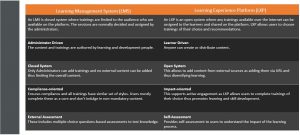There is a lot of development in pharmaceutical research, manufacturing, storage, distribution, quality control, logistics, and sales. Every day, new drugs are introduced based on this research. Simultaneously, several drugs are discarded or banned based on the same findings. In parallel with this, there is also a lot of research and innovation in related technologies. Subsequently, new processes and policies are being put in place by organizations like the FDA. To cater to such a complex business environment, the Pharma Industry is constantly in need of highly skilled employees, and talented candidates are scarce, making hiring a complicated path for the Pharma business compared to most other industries.
To bridge the gap between required and available talent, the Pharma industry relies on corporate learning and development initiatives. The most important of these initiatives being the onboarding of the new hires.
Along with hiring, retaining talent is also a challenge. According to a survey done by BioSpace, 67% of biosciences employees were looking at changing their jobs in 2020. However, due to destabilized markets during the pandemic, people refrained from moving, but now the trend has returned with the post-pandemic growth spurt. The regulated nature of the industry makes employee churn an issue, and the BioSpace survey reports:
“In fact, at least one study indicates the cost of each employee’s turnover ranges from 70 to 300 percent of the annual salary of that employee. And the replacement costs are about 2.5 times the salary of the individual.”
To find the appropriate solution to these two talent-related issues, it is important to understand what motivates employees to join companies and stay with them. The Work Institute Retention Report 2020 states that the top three categories for leaving in 2019 were Career Development (19.6%), Work-Life Balance (12.4%), and Manager Behavior (11.8%). The same reasons featured in the article by job-search website, ‘Indeed’ in 2021. It is notable here that the Work Institute Retention Report 2020 also mentions that over one-third (37.9%) of interviewees exited their organization within 365 days or less. Two out of three employees who leave in the first year do so in the first six months.
Two of the reasons cited above, career development and manager behavior, account for 30% of the attrition. Also, the main reason for employees leaving the organization within 365 days or less can be linked to the initial 3 months’ experience of the employee when they are onboarding with the organization. We believe that most of these issues can be solved by effective training and development programs. In this article, we will examine the role of an enterprise LMS or Learning Management System in solving onboarding and retention problems.
Amit Tyagi, Customer Success Head at G-Cube shares: “The modern learning management suite is capable of doing a lot more than just manage learning. With the right insights, a corporate LMS can be easily used to train, engage and give a growth vision to your employees.”
Some Elements of the Enterprise LMS that helps onboarding and retention
Pre-Onboarding Engagement
Working remotely is the future, and it serves your purpose perfectly. With a cloud-based learning management system, you don’t need your new hire to come to the office to initiate them into the organization. With multiple formats of content support, the LMS can start engaging your new hire even before their onboarding process begins. LMS, as a repository of content, makes knowledge transfer easy and hassle-free. As such, it helps reduce the anxiety among the new joiners who can then access this information without waiting for a manager or HR.
Abundant Training and Timely Certification
Pharma has a complex knowledge requirement. Product, process, policies, compliance, risks, safety – managing the plethora of knowledge in an easy-to-access search is important to create a suitable learning environment for employees. A major cause of concern among new hires is the requirement of rigorous training and certification related to their job role. Having to manage that manually can result in various clerical errors, which can result in serious implications with auditory authorities. Having the training content available at their fingertips boosts the employees’ confidence, and the LMS automatically tracks the certification requirement and expiry, relieving them of the pressure of monitoring it manually.
Provide Growth Vision
Research suggests people are less likely to leave their jobs if they have a career development vision. Use your LMS to assess the current level of skill and expertise of your employees, gather inputs on their vision of their career, and offer training based on these attributes. This practice demonstrates that employers are taking their career development needs seriously. For new employees, engaging with senior management can be daunting. With the LMS helping them visualize their path and growth with constant support, employees feel comfortable and give their best.
Improve Employee Feedback
In any organization, feedback should be a two-way process and as Pharma comprises a highly skilled workforce, it is especially important that they feel heard. The enterprise LMS can help you gather feedback from individual employees on their experience with their peers and even managers without running from desk to desk.
Predict Employee Churn
Everything is based on how you read your data. An enterprise Learning Management System helps you track a multitude of data. By tracking scores from relevant workplace assessments and correlating them with employee longevity, employers can identify risk factors that require intervention to prevent employee churn.
Traditionally, a paper-driven process like onboarding has been treated mostly as a formality, but researchers have highlighted the impact it has on the new joiner and how important it is to give them an immersive experience in the first few months. G-Cube Learning Technologies unit has a dedicated customer success team who can help you envision all possible solutions to your business challenges through the right learning and learning-tech interventions.







